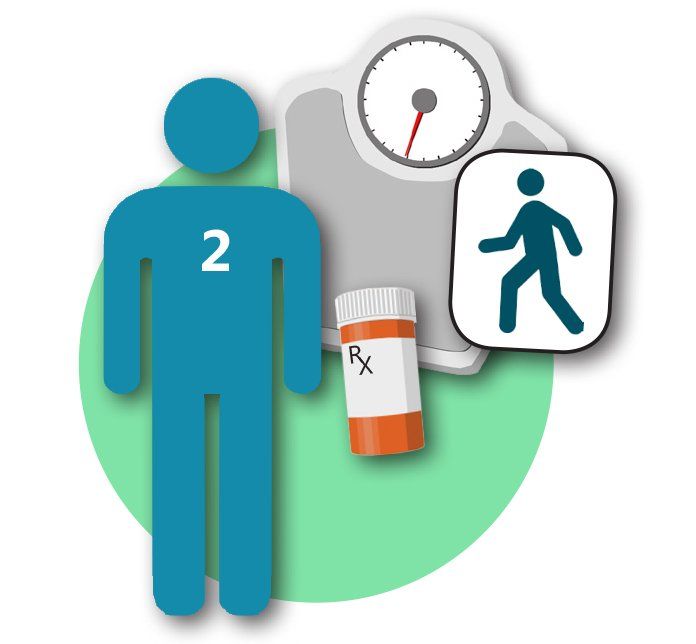Type 2 diabetes
TYPE 2 DIABETES BASICS

“I thought having a chronic illness would make my life detour in ways I didn’t want to accept, but I’ve learnt that have a chronic illness made the only detours that are worth the growth.”
― Nikki Rowe
What is Type 2 diabetes?
Type 2 diabetes is also referred to as adult-onset diabetes. While people are often diagnosed with Type 2 in their 40s and later, there are becoming more cases of Type 2 occurring in people in their 20s or younger. In Type 2 diabetes, the pancreas either does not create enough insulin, or the person’s body does not appropriately use the insulin it makes. When you have Type 2 diabetes, sugar builds up in your bloodstream instead of being used for energy. Many factors can increase the chances of getting Type 2 diabetes, such as: family history, high blood pressure, a sedentary lifestyle, being overweight, or having high cholesterol. Race can also increase the chances of having Type 2 diabetes: Aboriginal, Hispanic, African, Asian or South Asian are populations that generally have a higher risk.
What causes Type 2 diabetes?
Some factors that can contribute to the onset of Type 2 diabetes are:
- Being overweight
- Family history
- Being a member of a high-risk ethnic group such as First Nations, Inuit, Latin American, Asian, Pacific Islander or African American
- High blood pressure
- High cholesterol
- Not exercising
What is the difference between Type 1 and Type 2 diabetes?
A person with Type 1 diabetes relies completely on insulin therapy and diet and there is currently no cure. A person with Type 2 diabetes can either control blood sugars through medication, diet, exercise, and occasionally insulin therapy. Type 2 can be treated in many ways or with a combination of these treatments mentioned above. Type 2 diabetes is sometimes preventable; the best way to prevent diabetes is to exercise regularly and maintain a body weight that is appropriate for your height. However, some people have such a strong genetic disposition to Type 2 diabetes or to obesity that weight loss and exercise simply cannot prevent the disease.
What is pre-diabetes?
Pre-diabetes is a condition that is sometimes diagnosed prior to developing Type 2 diabetes. Pre-diabetes does not require medication, and when diagnosed, the chance of it developing into Type 2 diabetes can be dramatically decreased by taking immediate action. Pre-diabetes is a state where your blood sugar levels are consistently higher than normal, but not high enough for a diagnosis of diabetes. Blood sugar levels can be reduced by making some simple lifestyle changes, such as including exercise in your daily activities and choosing to make healthy, low-fat meal choices.
LET'S WORK TOGETHER TO FIND A CURE.
VISIT US
1-020 Li Ka Shing Centre
University of Alberta
Edmonton, AB, T6G 2E1
Office Hours
Monday-Friday 8:30-4:00
If you would like to set up an appointment at our office, please set up an appointment by contacting us at
info@abdiabetes.com
